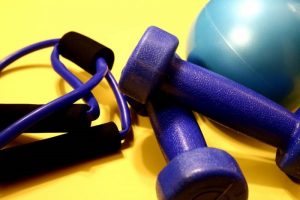 Everyone who wants to stay fit and healthy has an exercise routine. That’s a given. But the big question is this: Wouldn’t it be great to know how much exercise is the “right amount,” without having to guess?
Everyone who wants to stay fit and healthy has an exercise routine. That’s a given. But the big question is this: Wouldn’t it be great to know how much exercise is the “right amount,” without having to guess?
It’s easy to do too little and not really get results. Likewise, some people tend to go overboard and hurt themselves with too much physical activity and exercise.
What’s the Answer?
Fortunately, when I began researching this question about sensible exercise routines I came across a few very informative government reports and studies that addressed the question head-on. A major study by the Dept. of Health and Human Services, as well as the Dept. of Agriculture, has plenty to say on this topic.
It turns out that, for better or worse, all those government and scientific experts have arrived at a sort-of consensus: Healthy adults need between 30 and 90 minutes of exercise every single day.
That’s bad news for some and good news for others, but there is actually a lot more to the story than that. I decided to dig a little deeper than just one study, so I consulted some of the top medical websites, like WebMD’s fitness and exercise overview, and discovered a few intriguing details about that general “30-to-90” guideline. Here’s what I found out:
Essential Factoids About Daily Exercise Duration:
Learn More About Daily Exercise Routines
There are, literally, thousands of books about daily exercise. Some of the best ones happen to be written for people over the age of 50. But there are several very high-quality “general” exercise books that can help anyone build their own routine without having to join a gym or buy a bunch of equipment. I sorted through the top 100 exercise and fitness books available on Amazon and picked the following three as the “best of the best.” Your mileage may vary, but for the generalist who just wants to start a sensible daily exercise routine, these books make the team.
Exercise and Fitness Over 50: This clever book, by Elle Petersen, is full of advice about lifestyle changes that make sense, dietary information for people approaching the second half of their lives, and of course some very enlightening exercise routines and workouts that are simple to do and easy to stick with.
100 No-Equipment Workouts (Vol.1): As the title promises, author Neily Ray delivers a full set of simple workouts that call for nothing more than your living room floor and a healthy dose of dedication. The volume is even printed in extra-large size so users can place it on the floor and consult it as they exercise. For beginning and advanced fitness enthusiasts of all ages and abilities, the book has something for everyone who wants to break free of the gym, the machines and all the complicated equipment. It might be called “old fashioned” exercise, but it gets the job done and receives extremely positive reviews.
Workout: Routines – Sample Strength And Conditioning Bodyweight Exercises Workout Routines For Men And Women, by David Nordmark: For athletes and beginners, this book has an extensive section on stretching, specialized training, calisthenics, and all sorts of advice for fitness-minded readers. The emphasis is on “bodyweight” exercise, which means no weights or equipment. For those who don’t want to get tied to weight routines, treadmills and technology-based fitness, this book is a smart choice.
What’s Your Plan?
Do you already have a daily exercise routine, and if so, how many minutes per day do you work out? We’d love to hear your feedback, questions and comments about what the “right amount” of exercise is for you and how you decided on a specific routine.
Let us know in the comments section below and/or on our Facebook page. If you are still trying to decide on a daily routine, be sure to check with a doctor first and begin slowly. All the experts emphasize the importance of starting out consistently and cautiously.
Know your limits and be careful. It’s all about long-term health and fitness, not quick-fix diets or oddball exercise routines that promise magical, instant results. Good luck.
0 comments